Evergreen huckleberry (
Vaccinium ovatum) is surely one of the most versatile, attractive and wildlife friendly of all the Pacific Northwest natives. Factor in the delicious berries that are adored by wildlife and humans alike, and you have a plant that richly deserves to be in every home garden.
In spring clusters of urn-shaped, pink-tinted white flowers adorn branch tips, drawing hummingbirds, butterflies and bees. New growth is a lovely burgundy or rusty-red and then turns deep green. By early summer small red berries appear, turning purple-black when ripe in late summer to early fall, when they are ready to harvest for pies, jam and glorious eating fresh. Fall brings occasional sparkles of bright red, shedding leaves, followed by the steady winter beauty of the finely cut, deep green foliage, much prized for use as filler in floral bouquets.
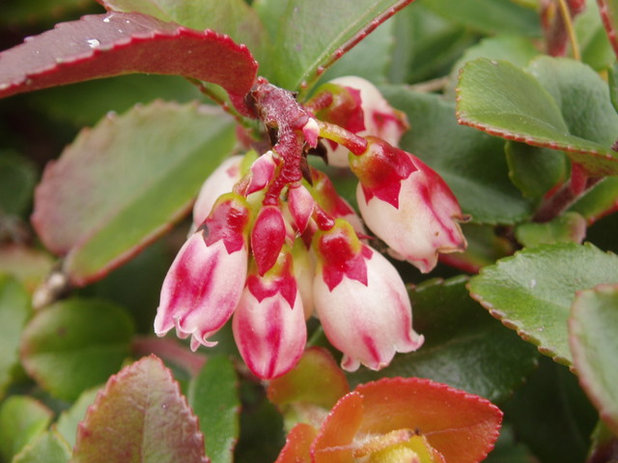 Botanical name: Vaccinium ovatumCommon names:
Botanical name: Vaccinium ovatumCommon names: Evergreen huckleberry, California huckleberry, shot huckleberry
Origin: Coastal western North America, from California to British Columbia
Where it will grow: Hardy to -10 degrees Fahrenheit (USDA zones 6 to 9; find your zone)
Water requirement: Thrives in well-drained soil and can survive with no supplemental summer water in shady woodland conditions; plants in full sun benefit from more regular water in summer
Light requirement: Full sun to fairly shady conditions, although fruiting is best in sun
Mature size: 3 to 12 feet tall in cultivation; shorter in full sun and tall and leggy in deep shade
Benefits and tolerances: Blossoms provide food for insects and hummingbirds; produces fruit in fall
Seasonal interest: Pretty pinkish-white, urn-shaped flowers in April and May; tasty fruit in late summer and early fall
W
hen to plant: Fall to spring is ideal
Distinguishing traits. Charming little pinkish-white, urn-shaped flowers, appearing in April and May, provide nectar for hummers and butterflies and pollen for insects.
Photo by Tom Hilton
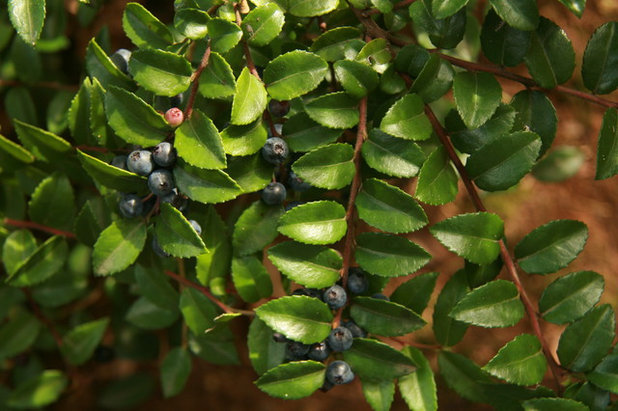
Kate Bryant
The delicious purple-black fruit (closely related to blueberries) is sought after by foraging birds and mammals, including humans. Spicy, sweet-tart evergreen huckleberry fruit is reputed to taste best after the first frost, but the pickings are best right when they ripen, usually in early fall.
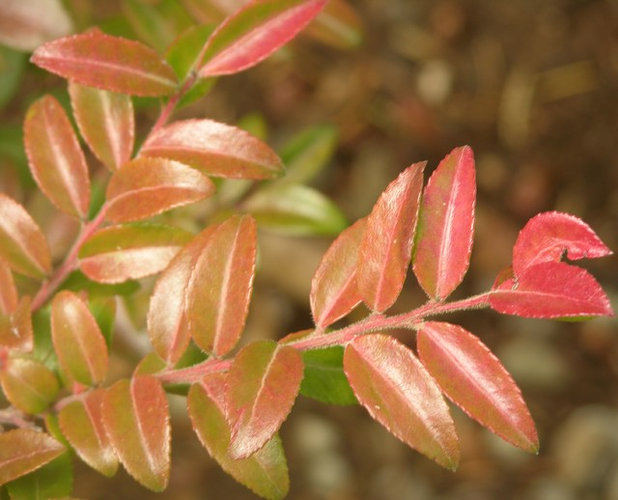
Hansen's Northwest Native Plant Database
Established plants can send out beautiful new bronze shoots up to a foot in length.
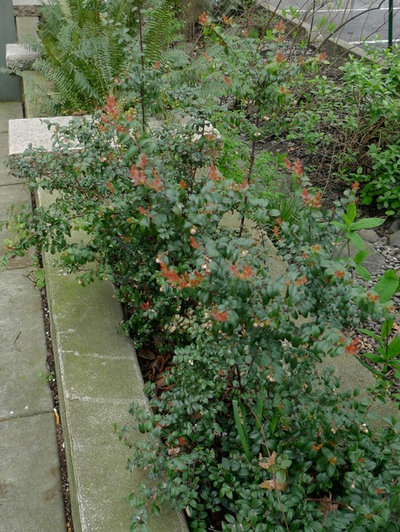
Kate Bryant
How to use it. Evergreen huckleberry is exceedingly versatile, growing well in full sun (it will grow much shorter) or in considerable woodland shade, where it can reach up to 18 feet tall and wide, with an almost vine-like appearance.
It tolerates salt spray and is the perfect coastal plant. It looks its best in woodland clearings and forest margins, where it grows in the wild. Evergreen huckleberry makes a handsome evergreen component in an informal mixed hedge that also provides wildlife with shelter, nectar and pollen. Plant it behind deciduous shrubs and it will magically reappear in late fall when the deciduous shrubs drop their leaves. Or trim it into a low, formal hedge in a more prominent place in the garden.
Evergreen huckleberry can survive in an urban environment, as long as the plants receive some protection from hot afternoon sun and the soil is humus rich and well drained.
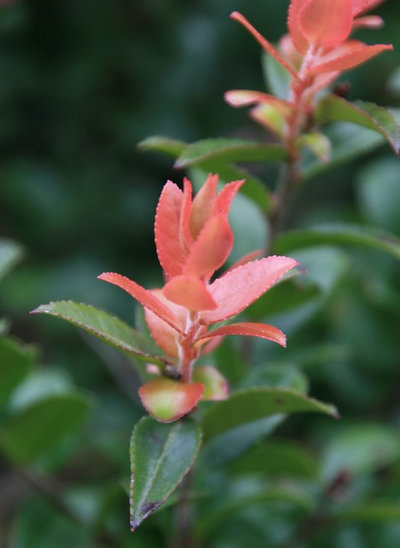
Hansen's Northwest Native Plant Database
Planting notes. Evergreen huckleberry is slow to establish but grows nicely once settled. Provide humus-rich, well-drained, acidic soil and maintain regular watering for the first year or two during establishment. Flowering (and therefore fruiting) is best when the plants receive a full half-day to three-quarters of a day of sun, but the plants are adaptable and can tolerate fairly deep shade as well.
Shown: Pinkish new growth in spring lighting up a shady garden area
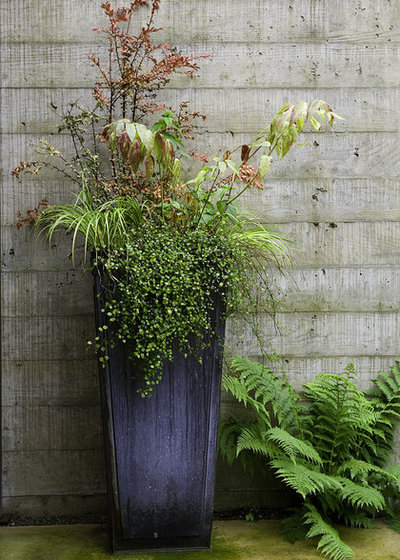
Kenneth Philp Landscape Architects
There are only a handful of varieties, including
Vaccinium ovatum ‘Thunderbird’ (planted in the back of this container), which is reported to have more distinctly bronze new growth and heavier flowering and fruiting, and
V. ovatum ‘Native Star’, selected for more upright, compact growth and heavy flowering and fruiting. Both cultivars are said to reach approximately 4 to 6 feet tall.





